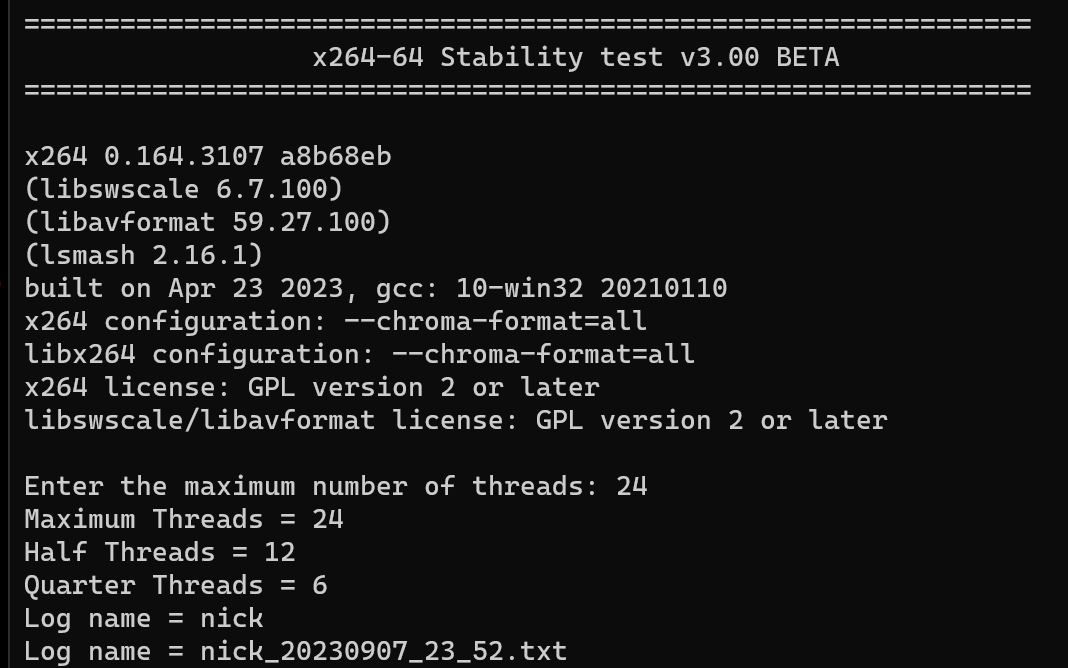I have been using the old x264 Stability test since 2014…THATS 9 years ago.
Haswell Overclocking Guide [With Statistics] | Page 737 | Overclock.net
There are 12323123 options for stress testing in 2023. But I’ve always liked this one, because it’s not wholly synthetic…and it’s not proprietary software maintained by someone else.
Given processor technology changes over the past decade…I thought it was worth updating it and posting it here. The primay differentiator, other than being re-written in Python, is the thread allocation testing.
With clocks becoming highly dynamic based on a slew of factors, I thought it proper to take that into consideration with this old tried-and-true test:
Preset Thread Allocation for Stress Testing
The script performs stress tests using pre-defined thread allocations to emulate different workload conditions. Here are the different scenarios tested:
- Maximum Threads: Utilizes the full number of threads specified by the user, aiming to test the CPU’s capacity under heavy multithreaded workloads.
- Half Threads: Employs half of the specified maximum threads (rounded down) to simulate moderately multithreaded workloads.
- Quarter Threads: Engages a quarter of the maximum threads (rounded down) for testing under lighter multithreaded conditions.
- Minimal Threads: In the final stage, a minimal setup using 2 threads is engaged to scrutinize the stability under minimal multithreaded conditions.
Each scenario presents a different level of stress on the CPU, aiming to ensure stability under various potential workloads.
And the UI should look familiar to overclocking veterans:
